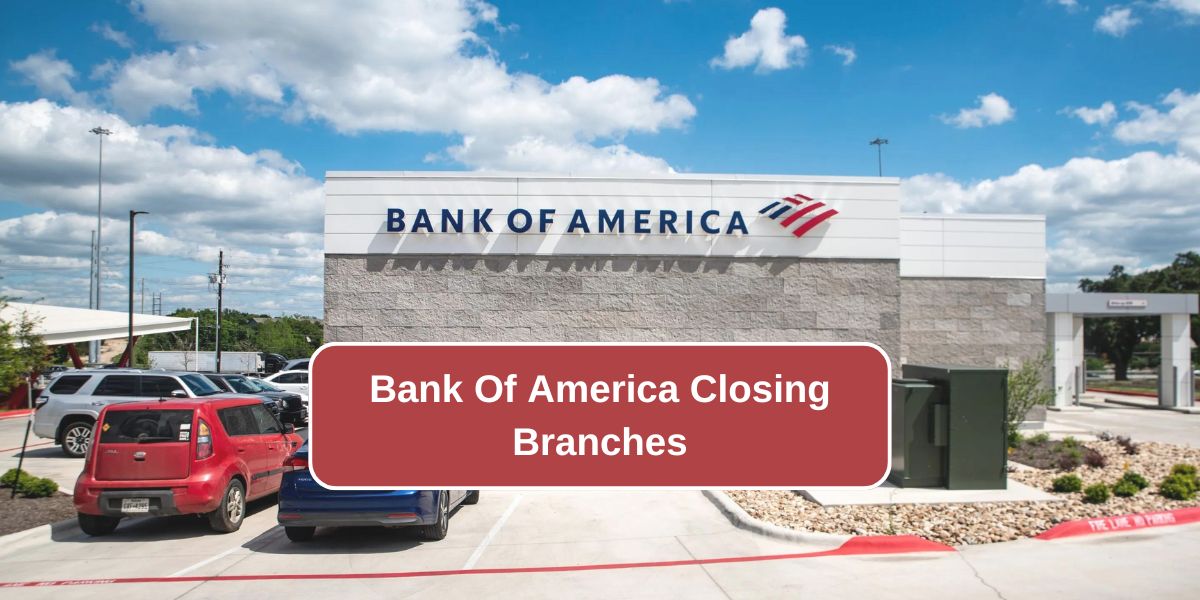Bank closures are a notable trend across the United States, particularly during the summer months of July and August. Bank of America is at the forefront of this trend, with plans to close additional branches throughout 2024. This decision is part of a broader strategy to downsize physical locations, driven by the growing popularity of online banking and a reduction in foot traffic to traditional branches.
Table of Contents
Economic Implications of Branch Closures
The closure of physical bank branches carries significant economic implications for both banks and the communities they serve. For banks, closing branches reduces operational costs such as rent, utilities, and staff salaries, while enabling a focus on more profitable ventures and investments in digital infrastructure. However, these closures can lead to job losses for local employees, including office managers, tellers, and janitors, which negatively affects the local economy.
For customers, particularly in rural or underserved communities, branch closures can pose significant challenges. These areas often face limited access to reliable internet, making online banking less practical. Many residents in these communities also depend on face-to-face interactions for services like cashing checks or receiving financial advice. The closure of local branches can result in financial isolation for these individuals, as they may lack the resources or expertise to effectively use online banking platforms.
| Dwp Universal Credit News 2024 |
| Snapchat Class Action Settlement 2024 |
| Social Security Disability Benefits Pay Chart 2024 |
| Australia Minimum Pension |
| 1907 Social Security |
Regulatory Oversight
The closure of bank branches is closely overseen by regulatory bodies like the Office of the Comptroller of the Currency (OCC), which mandates that banks notify them of any closures at least 90 days in advance. This regulation ensures that closures do not disproportionately impact specific communities and that customers receive adequate notice and preparation time for the changes.
Bank of America Branch Closure Schedule
Bank of America has released a comprehensive schedule for its branch closures, extending through the end of 2024. Here are the closures planned for the upcoming months:
| Date | Location |
|---|---|
| July 30 | 3565 California St, San Francisco, CA |
| August 13 | 11060 NE 6th Street, Suite 80, Bellevue, WA |
| August 13 | 1401 S. Harbor Boulevard, Fullerton, CA |
| August 17 | 2049 Century Park East, Los Angeles, CA |
| August 17 | 455 Island Avenue, San Diego, CA |
| September 19 | 5114 South Power Road, Mesa, AZ |
| September 24 | 29687 The Old Road, Castaic, CA |
| October 29 | 13700 Jog Road, West Delray Beach, FL |
| November 19 | 6261 PGA Boulevard, Palm Beach Gardens, FL |
These closures highlight a wider industry trend towards cost optimization and the increasing shift to digital banking solutions.
As the banking landscape evolves, customers will need to adapt to these changes, while banks continue to navigate the challenges and opportunities presented by the growing digital world.
Reasons Behind the Closures
Bank of America’s decision to close branches is influenced by several factors:
- Merger Completion: Following various mergers, the bank now has numerous underutilized branches in rural areas that are no longer cost-effective.
- Customer Habits: The bank anticipates that customers will adjust to traveling a bit further to reach their nearest branch.
The Shift to Online Banking
The move towards online banking began years ago but gained significant momentum after the 2008 financial crisis. However, it was the COVID-19 pandemic that dramatically accelerated this shift. With people confined to their homes, banks had to swiftly transition to online operations and bolster cybersecurity to manage the surge in digital transactions. This shift was driven not only by the need for convenience but also by the imperative to adapt and survive in an increasingly digital landscape.
For many customers, transitioning to online banking has been smooth and convenient. Traditional banking hours, often inconvenient for those with a standard nine-to-five job, made online banking an appealing alternative. Many Americans discovered that they could handle nearly all of their banking needs online, from checking balances to transferring money, without needing to visit a physical branch. This shift to digital banking has reduced reliance on physical branches, allowing banks like Bank of America to justify closing less profitable locations.
Online Banking Trends
Since 2010, the trend of bank branch closures has accelerated, particularly during the Covid-19 pandemic, as digital banking services have become increasingly popular. The Midwest and California have been particularly affected by these closures. Several factors contribute to the transition towards online services:
- Tailored Services: Banks are leveraging data analytics to offer personalized financial services, including customized product recommendations, budgeting tools, and individualized financial advice.
- Enhanced Banking Experience: The emphasis on mobile banking has led to the development of user-friendly apps that offer features such as bill payments, money transfers, mobile deposits, and investment management.
- Stricter Security Measures: As online banking grows, robust security measures like biometric identification and multi-factor authentication are essential for protecting user data and preventing cyber-attacks.
- Contactless Payments: The rise of contactless payment methods, such as mobile wallets and digital tokens, is growing. Banks are promoting these technologies through their apps as secure and convenient ways to pay for goods and services.
The closure of bank branches, including those by Bank of America, reflects these broader shifts in the banking industry. While these closures present challenges, especially for customers who rely on physical branches, they also underscore the ongoing evolution of financial services towards more digital and personalized solutions.
FAQs
Why is Bank of America closing branches?
Bank of America is closing branches primarily due to the growth of online banking, which has decreased foot traffic and created a need to cut operational costs.
How does the closure of bank branches affect customers?
For customers, particularly in rural or underserved areas, branch closures can make it more difficult to access banking services, potentially leading to financial isolation.






